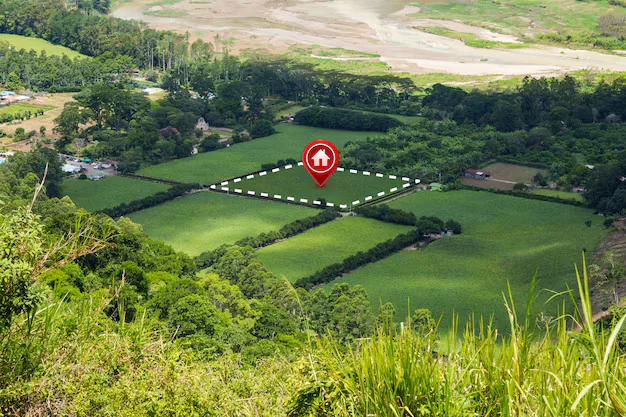Physical Address
304 North Cardinal St.
Dorchester Center, MA 02124
Physical Address
304 North Cardinal St.
Dorchester Center, MA 02124

Throughout human history, **seasonal** phenomena have played a vital role in shaping our environment, culture, and lifestyle. From the blooming of spring flowers to the chilly embrace of winter, **seasonal** patterns influence everything from agriculture and flora to fashion and economic cycles. Recognizing the importance of **seasonal** changes helps us appreciate the natural world, prepare for varying conditions, and adapt effectively to the shifting environment. This comprehensive guide explores the multifaceted aspects of **seasonal** phenomena, highlighting their significance across nature, culture, economy, and personal life.
The most universally recognized **seasonal** cycle includes spring, summer, autumn (or fall), and winter. Each season exhibits distinct weather patterns, daylight hours, and ecological activities that collectively shape life on Earth.
The primary driver of **seasonal** variation is the Earth’s axial tilt of approximately 23.5°. This tilt causes different parts of the planet to receive varying amounts of sunlight throughout the year. Additionally, the Earth’s orbit around the Sun influences the progression of seasons, leading to predictable transitions that are essential for ecosystems and agriculture.
Seasons have inspired a multitude of festivals, holidays, and traditions across cultures. From the Chinese New Year celebrations marking the arrival of spring to harvest festivals in autumn, the **seasonal** calendar is deeply embedded in cultural expression and societal rhythms worldwide. These customs often reflect the significance of seasonal changes in human life, emphasizing renewal, gratitude, and community.
Plants new life emerge during spring with abundant flowering, while many species enter dormancy during winter to survive cold temperatures. Seasonal flowering plants like cherry blossoms and tulips exemplify how flora adapts to **seasonal** cues, ensuring reproductive success and ecological balance.
Animals greatly adapt their behaviors to **seasonal** shifts. Many species, including birds like swallows and monarch butterflies, undertake long migrations to find favorable breeding or feeding grounds. Breeding seasons are carefully timed with environmental cues like temperature and food availability, often aligning with spring or early summer.
Temperature fluctuations, rainfall patterns, and humidity levels are key components of **seasonal** climate changes. These variations influence ecological systems, prompting species to develop unique adaptations. For example, some plants flower only during specific **seasonal** windows, and animals build winter shelters or hibernate during harsh seasons.
Long-term **seasonal** changes contribute to the evolution of ecosystems. Seasonal ecosystems such as temperate forests depend on these patterns for maintaining biodiversity. As climate patterns shift, so do these ecosystems, with species adjusting their behaviors or faces decline, underscoring the importance of understanding **seasonal** dynamics.
Agricultural practices closely follow **seasonal** cycles. Farmers plant crops like wheat and barley in autumn or spring, harvesting in summer or early autumn. Seasonal timing maximizes yield and aligns with natural plant growth stages, ensuring food security.
To cope with **seasonal** variations, farmers employ techniques like greenhouses, season extension technologies, and crop rotation. These practices help extend growing seasons or protect plants from adverse weather, especially as **seasonal** patterns become more unpredictable due to climate change.
Rising global temperatures and shifting precipitation patterns affect traditional **seasonal** crop schedules. Farmers face new challenges such as earlier planting seasons, drought conditions, or crop failures, underscoring the urgent need to adapt agricultural practices to **seasonal** shifts driven by climate change. For more insights, visit the [FAO Climate Change and agriculture](https://www.fao.org/climate-change/en/).
Fashion is highly influenced by **seasonal** trends. Spring collections often feature pastel colors and light fabrics, while winter wears include warm coats and heavier textiles. Seasonal colors and fabrics adapt to weather conditions and cultural preferences, making **seasonal** fashion essential for wardrobes.
From summer beach vacations to winter sports like skiing, **seasonal** activities align with climatic conditions. Many regions host seasonal markets, fairs, and festivals that celebrate local culture and seasonal harvests, fostering community engagement and tourism.
Seasonal ingredients such as strawberries in summer or squash in autumn are central to regional cuisine. Preserving seasonal produce through canning, drying, or freezing ensures year-round access to fresh **seasonal** foods and promotes sustainable eating habits.
Many retail businesses experience **seasonal** peaks, such as holiday shopping seasons around Christmas or back-to-school periods. Effective marketing campaigns align products with these **seasonal** needs, boosting sales.
Travel destinations often depend on **seasonal** peaks, like winter ski resorts or summer beach towns. Understanding these cycles helps businesses optimize their services and marketing efforts.
Businesses develop **seasonal** products, such as winter clothing lines or summer outdoor gear. Advertising strategies emphasize **seasonal** relevance, encouraging consumers to prepare for upcoming weather or events.
Individuals can adapt to **seasonal** changes by dressing appropriately, adjusting home insulation, and maintaining health through seasonal eating and exercise. Staying informed about weather forecasts helps in planning daily activities and avoiding weather-related risks.
Infrastructure planning, such as road maintenance or flood defenses, considers **seasonal** impacts. Emergency preparedness for extreme weather events like storms or snowfalls enhances community resilience.
Climate control systems like HVAC ensure comfort regardless of **seasonal** variations. Additionally, advanced forecasting tools help anticipate **seasonal** weather patterns, aiding in agriculture, transportation, and disaster management.
| Aspect | Details | Implications |
|---|---|---|
| Seasons | Spring, Summer, Autumn, Winter | Drive ecological cycles and cultural traditions |
| Cause of Changes | Earth’s axial tilt and orbit around Sun | Predictable **seasonal** transitions |
| Natural Impact | Flora, fauna, climate variations | Species adaptations and ecosystem health |
| Agriculture | Crop cycles, farming practices | Food security and sustainability |
| Fashion & Lifestyle | Clothing, festivals, cuisine | Consumer behavior aligned with **seasonal** trends |
| Business & Economy | Retail, tourism, products | Economic peaks and adaptation strategies |
| Adaptation | Personal, community, technological | Resilience against **seasonal** challenges |
Understanding **seasonal** patterns not only enriches our appreciation of the natural world but also empowers us to adapt intelligently, ensuring sustainability and wellness in a changing climate. Whether in nature, agriculture, fashion, or business, recognizing and responding to **seasonal** dynamics is key to thriving in harmony with Earth’s rhythms.